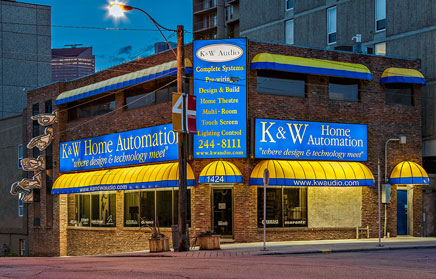Tip # 7:
Perhaps, as a medium, television has provided the most important single social impact of this century. We learn from it, are outraged by it, are entertained by it and undoubtedly are influenced by its programming. But how much do we know about the way it works, how it is evolving and where it is going? Here in North America the standard for Broadcast was established back in 1955, well before the advent of colour. When colour was introduced, the extra information was added as an afterthought and the system of Broadcast has changed very little since then.
TV’s have though! Until the late 70’s, a 19″- 21″ TV was a Big Screen, in the 1980’s 25″- 28″ became the large screen size and today most families prefer the popular 32″- 37″ size, Here are some thoughts to consider when purchasing a new TV:
In the past, 21″ TV’s offered the sharpest picture and as the size increased, the picture quality diminished. Now even 37″ TV’s offer sharpness, color and focus every bit as good as their smaller brothers. TV Manufacturers have concentrated R & D on the 28″- 37″ sizes. Monitor TV’s (those with video inputs & outputs and no cabinet) are the most popular as they provide a larger screen size in a smaller package. Video inputs allow you to hook your external video sources (VCR, Laser Disc, Camcorder, etc.) directly into the set, bypassing the degradation associated with a TV’s [tuner) – (superior input) = superior picture.
Most TV broadcasts are in stereo today, with specifications that are generally a little better than FM, and sound quality that is quite good. A Stereo Monitor TV with audio outputs allows you to run the sound through your Stereo, yielding even better sound. There are a variety of connectors on the back of most Monitor TV’s. Video inputs consist of 3 connectors, (1) Video and (2) Audio (left and right). Higher quality Monitor TV’s will have an “S” type video input connector as well as the more conventional RCA type.
The “S” type connector separates the Black and White signal from the Colour information, preventing these two signals from mixing until the final stage, just before being shown on the tube, This yields a better, sharper picture, but remember you must have a source that uses this type of connector to get the benefit. Super VHS hi-end camcorders and laser vision disc players will show a significant improvement with this type of connector. Some TV’s have speaker output jacks from an amplifier that has been built in to the TV. These amps are nowhere near as good as most home amplifiers. If you are thinking of running external speakers off your TV, you should use your stereo — and that goes for signal processing too. Some more exotic TV’s offer DSP (Digital Sound Processing) and a form of Surround that sounds quite good, however if you have, or intend to purchase a quality surround processor, don’t use the amp in your TV.
A useful feature today is a Unified, or Multi Brand Learning Remote Control. A Unified Remote will run a TV and VCR of the same brand off one control. A Multi Brand Learning Remote will run all brands, as it will “learn” the language of any remote and run your stereo as well as the video system. It’s nice to reduce the Remote “clutter” whenever possible.
Lines of Resolution is the Spec most people hear about. High quality TV’s will have 600 to 700 but it is important to understand that a TV will only show what it receives. For reference, keep in mind that when watching a live sports event and the picture looks sharp – that’s only 280 lines. The output from a High Resolution Camcorder will produce as much as 350 lines of resolution and a laser disc up to 420. Currently only computers are capable,of taxing a 600 line screen.
With home theatre so popular today, in trying to decide which screen size would be right for you, think about the aspect Ratio at your local theatre. In the past, it was argued that the larger the screen the farther from the TV screen one should sit. Yet the great thing about the theatre is the picture size- Don’t worry about how far you sit from the TV when deciding on size, as you may find that plunking a 34″ TV in the same spot your old smaller TV used to occupy, will greatly enhance that “Theatre” experience.


